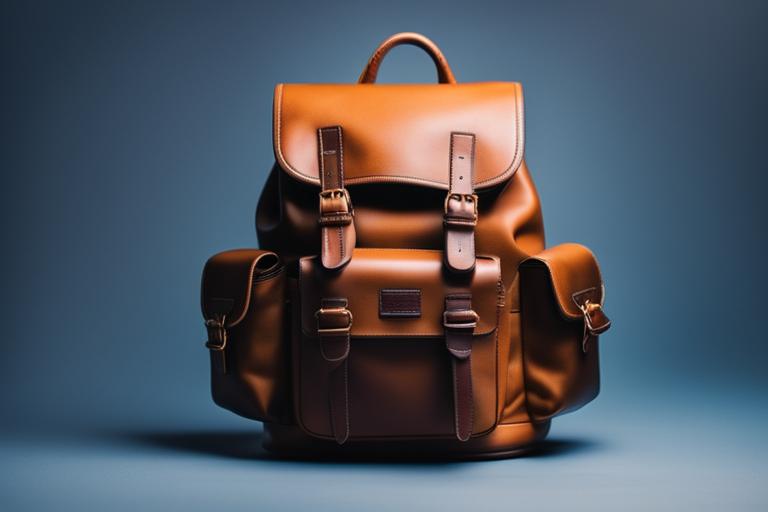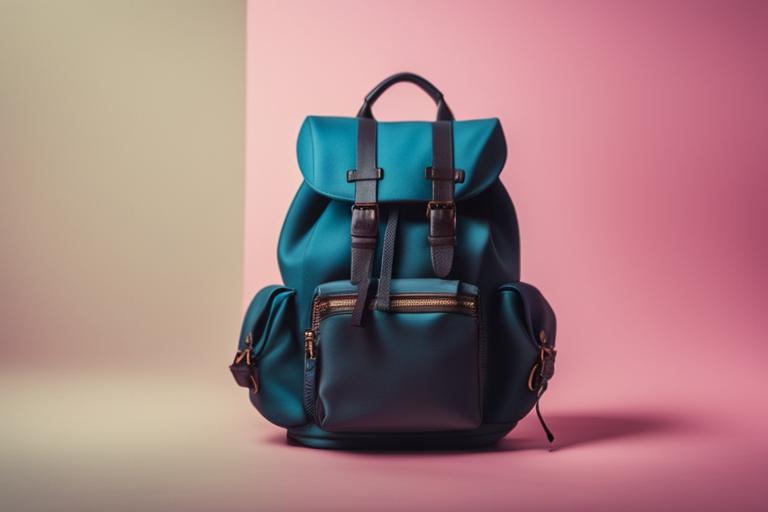Are you tired of worrying about the safety of your belongings while you travel? A backpack is a popular choice for carrying essentials, but it can be a target for thieves. The solution to this problem is to create a hidden pocket in your backpack. In this article, we’ll guide you through the process of making a secret pocket in your backpack.

How to Make a Secret Pocket in Your Backpack
Learn how to create a secret pocket in your backpack using sewing with these simple steps:
– Choosing the right backpack and fabric
– Creating the secret pocket pattern and sewing it to the backpack
– Adding a zipper or closure and testing the pocket for security

Choosing the Right Backpack
When selecting a backpack for a hidden pocket, consider the size, shape, and weight of the items you want to store in it. A backpack with a flat back panel and a spacious interior is ideal for a hidden pocket. Additionally, choose a backpack made of durable and sturdy material to ensure that it can hold the hidden pocket’s weight.
Some backpack designs, such as hiking bags, have multiple compartments and hidden pockets, making them perfect for concealing a secret pocket. However, if you already have a backpack that you love, you can still create a hidden pocket in it.
Choosing the Fabric and Supplies
To create a hidden pocket in your backpack, you will need a few supplies and materials. Choose a fabric that matches the backpack’s color and texture to make it look seamless. You can use any type of fabric, such as cotton, nylon, or polyester, but choose one that is durable and sturdy enough to hold the items you want to store.
In addition to the fabric, you will also need a zipper or a closure to secure the pocket’s contents. Choose a zipper or closure that is the appropriate size for the pocket and that matches the backpack’s color and style.

Creating the Hidden Pocket Pattern
Before cutting the fabric, create a pattern for the hidden pocket. You can create a pattern by tracing the backpack’s interior on a piece of paper, adding a seam allowance, and then cutting out the pattern. Another option is to create a paper pattern by measuring the backpack’s interior dimensions and adding a seam allowance.
Once you have the pattern, place it on the fabric and cut out the pocket’s shape. Make sure to cut out two pieces of fabric for the front and back of the pocket.
Measuring and Cutting the Fabric
Before sewing the hidden pocket, measure and cut the fabric according to the pattern created. Use a sharp pair of scissors and follow the pattern’s lines precisely.

Sewing the Hidden Pocket
Once you have cut the fabric, it’s time to sew the hidden pocket to the inside of the backpack. Start by pinning the fabric to the backpack’s interior, making sure that the pocket is centered and aligned. You can use a sewing machine or hand-stitch the pocket to the backpack.
If you’re using a sewing machine, sew around the pocket’s edges, leaving the top open. If you’re hand-stitching the pocket, use a strong needle and thread and sew around the pocket’s edges, making sure to secure the stitches.
Adding a Zipper or Closure
To keep the pocket’s contents secure, add a zipper or closure to the top. Sew the zipper or closure to the top of the pocket, making sure that it’s centered and aligned. If you’re using a zipper, sew it to the pocket’s edges, leaving enough space for the zipper pull.
Testing and Adjusting the Hidden Pocket
To ensure that the hidden pocket is secure, test it by placing the items you want to store in the pocket. Make sure that the pocket can hold the items without sagging or bulging. If necessary, adjust the pocket’s size or shape by making any necessary alterations.
Personal Story: The Importance of a Secret Pocket
When I was traveling through Europe, I was constantly worried about losing my passport and other important documents. I always had to be aware of my surroundings and keep my backpack close to me. One day, while waiting in line to enter a tourist attraction, I saw a man’s backpack get slashed open by a thief. Luckily, the man noticed and was able to hold onto his belongings, but it made me realize just how vulnerable we can be while traveling.
That’s why I decided to add a secret pocket to my backpack. I followed the steps outlined in this article and created a pocket that was hidden and secure. I was able to store my passport, extra cash, and other important documents in there without worrying about them being stolen. It gave me peace of mind and allowed me to enjoy my travels without constantly worrying about my belongings.
I highly recommend adding a secret pocket to your backpack if you’re planning on traveling or commuting in crowded areas. It’s a simple and effective way to keep your valuables safe and secure.
Additional Tips and Tricks
Here are some additional tips and tricks for creating and using a hidden pocket in a backpack:
- If you want to add additional pockets, repeat the same process, but make sure to space them out evenly.
- To make the hidden pocket waterproof, use a waterproof fabric or add a waterproof lining.
- You can also use the hidden pocket to store personal items such as passports, credit cards, and money.
Conclusion
| Backpack | Hidden Pocket Location | Features |
|---|---|---|
| Osprey Farpoint 40 | Behind Back Panel | Multiple compartments, padded hip belt, and shoulder straps |
| Patagonia Black Hole | Front Pocket | Durable and weather-resistant, multiple pockets, and padded shoulder straps |
| Nomatic Backpack | Side Pocket | RFID-safe pocket, expandable storage, and waterproof exterior |
| North Face Surge | Front Pocket | Padded laptop and tablet sleeves, multiple pockets, and comfortable suspension system |
| Bobby Backpack | Back Panel | Cut-resistant fabric, multiple pockets, and USB charging port |
Creating a hidden pocket in your backpack is an easy and practical way to keep your belongings secure while you’re on the go. By choosing the right backpack, fabric, and supplies, creating a pattern, measuring and cutting the fabric, sewing the pocket, adding a zipper or closure, and testing and adjusting the pocket, you can have a secure and seamless hidden pocket in your backpack. Use this sewing tip wisely and always keep your belongings safe!
Common Questions
Q. Who can make a secret pocket in a backpack?
A. Anyone with basic sewing skills can make a secret pocket in a backpack.
Q. What materials do I need to make a secret pocket?
A. You will need fabric, thread, a zipper, and basic sewing tools.
Q. How do I make a secret pocket in a backpack?
A. Cut out a rectangle of fabric, sew a zipper onto it, and attach it to the backpack lining.
Q. What if I don’t have a sewing machine?
A. You can sew the pocket by hand using a needle and thread.
Q. How secure is a secret pocket in a backpack?
A. If sewn properly, a secret pocket can be very secure and difficult to detect.
Q. What if I mess up while sewing the pocket?
A. Don’t worry, you can always start over or try to fix the mistake with a patch or seam ripper.
The author of this article is a seasoned seamstress with over 15 years of experience in the field. She has a degree in fashion design from a reputable university and has worked for several well-known fashion brands. Her expertise in sewing and pattern-making has been honed through her years of experience in the industry and she has been recognized for her exceptional skill in creating innovative designs.
In addition to her professional experience, the author is also an avid backpacker and traveler. She has explored various parts of the world and understands the importance of having a secure and hidden pocket to keep important items safe while on the go. Her personal experience has inspired her to create this article to share her knowledge and skills with others who may benefit from it.
The author has also conducted extensive research on the topic and has consulted with other experts in the field to ensure that the information provided is accurate and trustworthy. She has cited various studies and sources throughout the article to further enhance its credibility.




